Academic template
- Follow Quintana blog
- Academic template help
- Other resources
Steps:
- Open R studio
install.packages("blogdown")- Create a new project following
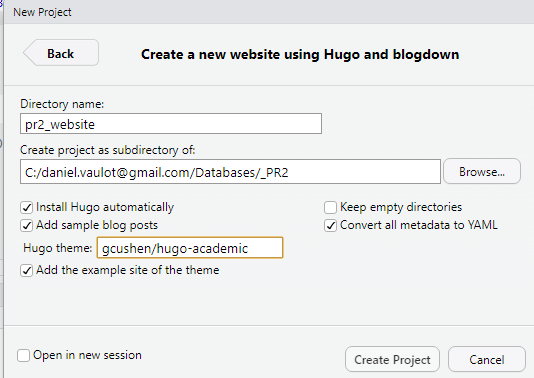
library(blogdown)blogdown::install_hugo(force = TRUE)
The latest Hugo version is 0.59.1
trying URL 'https://github.com/gohugoio/hugo/releases/download/v0.59.1/hugo_extended_0.59.1_Windows-64bit.zip'
length 29627443 bytes (28.3 MB)
downloaded 28.3 MB
Hugo has been installed to C:\Users\vaulot\AppData\Roaming\Hugo
blogdown::serve_site()
Rendering content/post/2015-07-23-r-rmarkdown.Rmd
Building sites …
| EN
+------------------+----+
Pages | 85
Paginator pages | 0
Non-page files | 21
Static files | 9
Processed images | 31
Aliases | 18
Sitemaps | 1
Cleaned | 0
Total in 15387 ms
To stop the server, run servr::daemon_stop(1) or restart your R session
Serving the directory C:\daniel.vaulot@gmail.com\Databases\_PR2\pr2_website at http://127.0.0.1:4321
- Drag and drop into Netifly new project
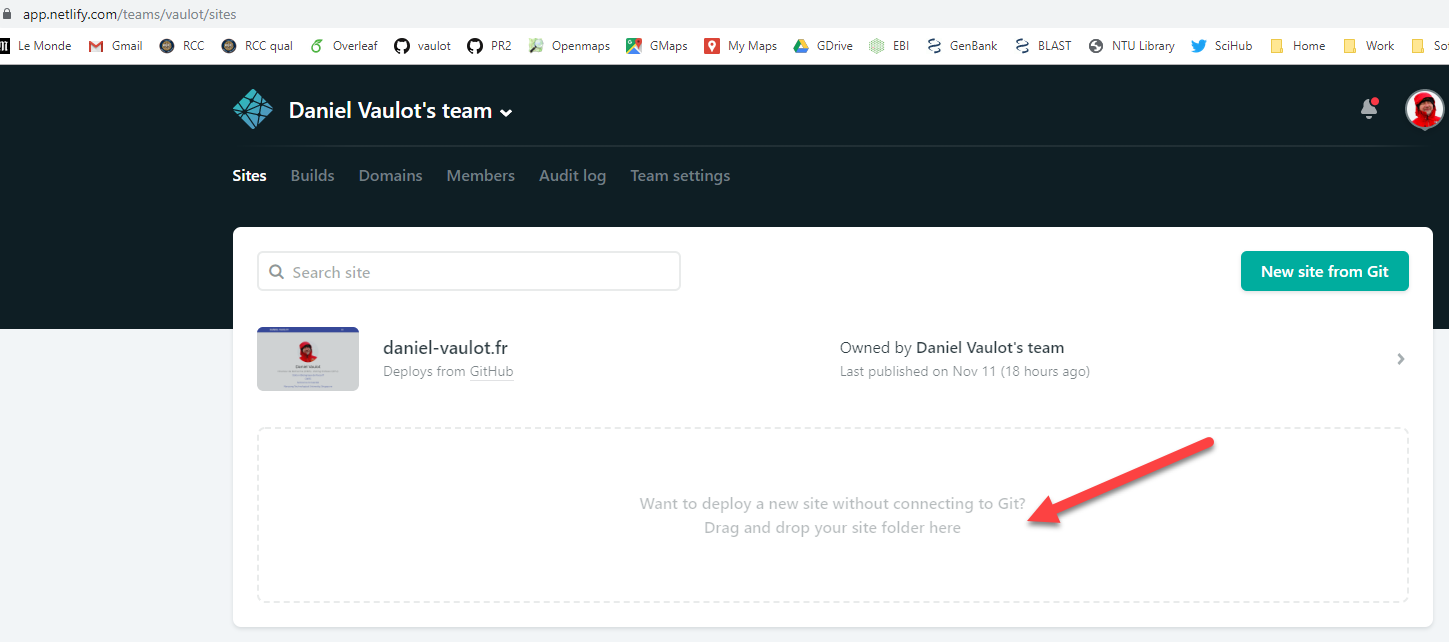
Change the name
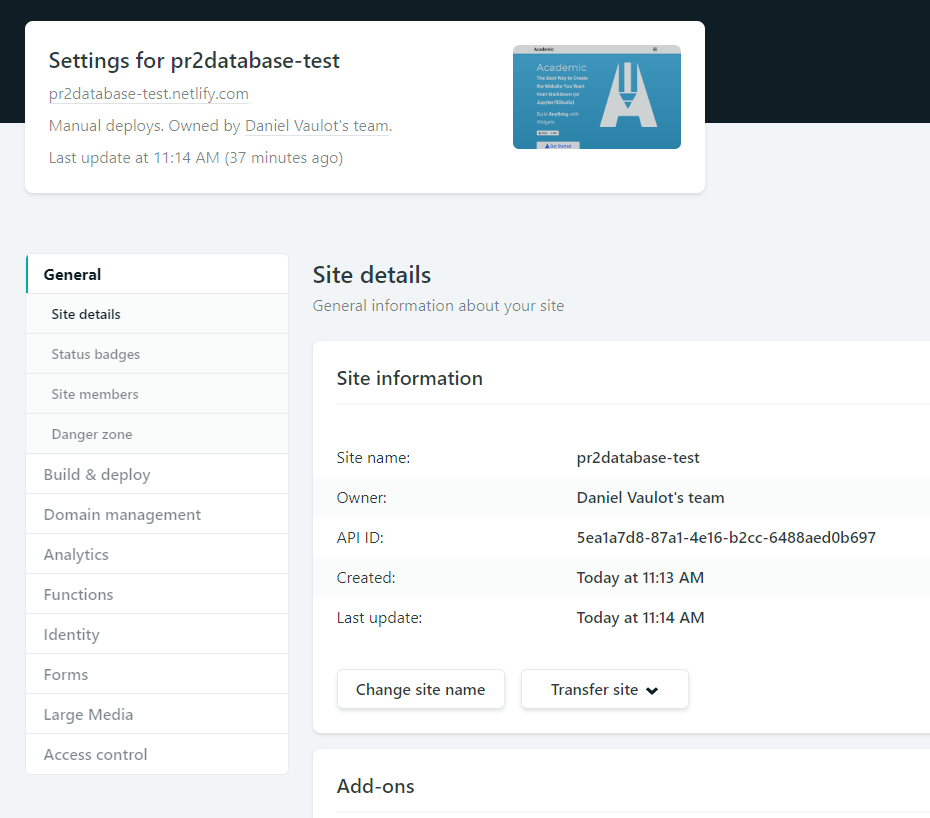
On the long run better to link to GitHub
Link to GitHUb from netifly
If error this can be due to HUGO version that can be changed in the site settings
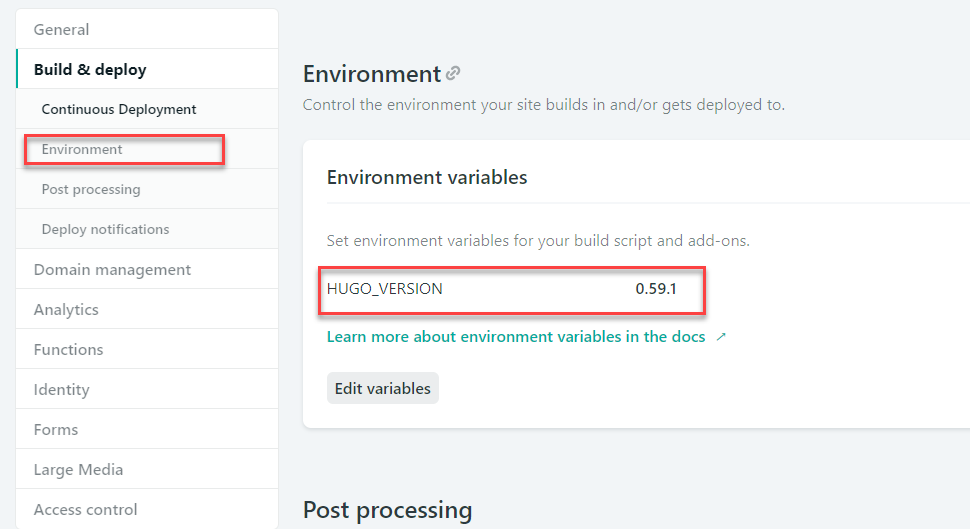
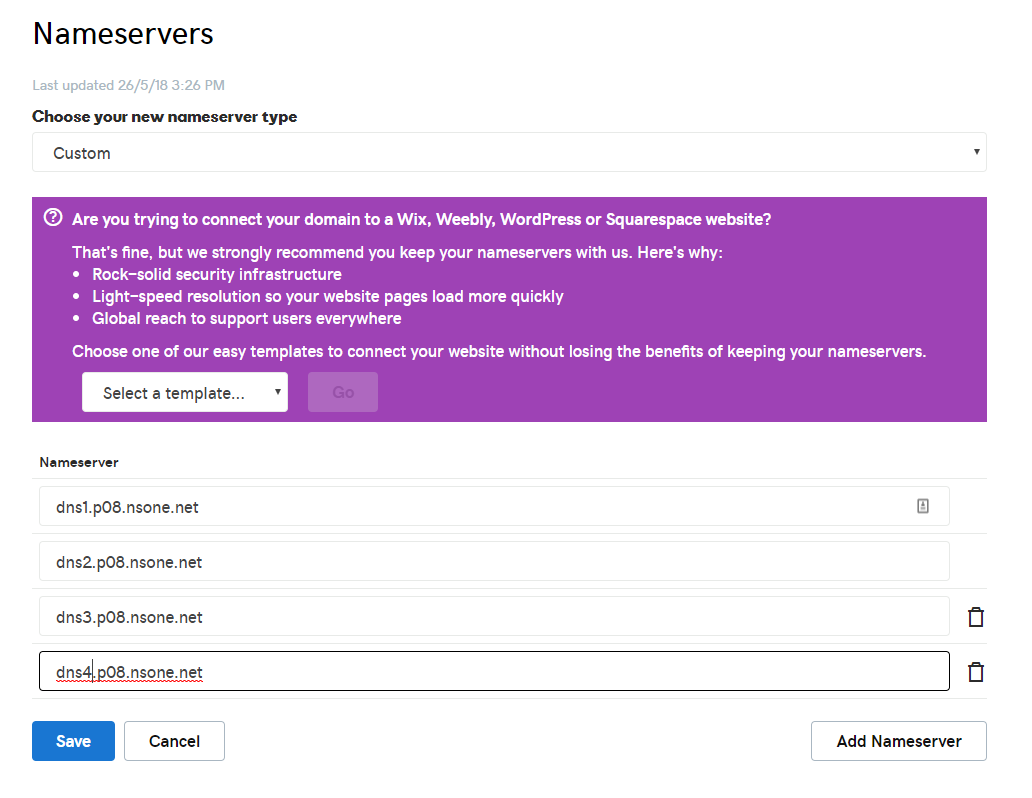


Netifly
- https://app.netlify.com/sites/vaulot/overview
- https://www.netlify.com/blog/2016/09/29/a-step-by-step-guide-deploying-on-netlify/
https://docs.netlify.com/domains-https/custom-domains/#assign-a-domain-to-a-site
Purchase domain name with GoDaddy and set up DNS on goDaddy side - works fine

Find errors
If there are errors, run on command line hugo -v in the root of the web site
 * If there is no error, the site should compile and give the stats of the site
* If there is no error, the site should compile and give the stats of the site
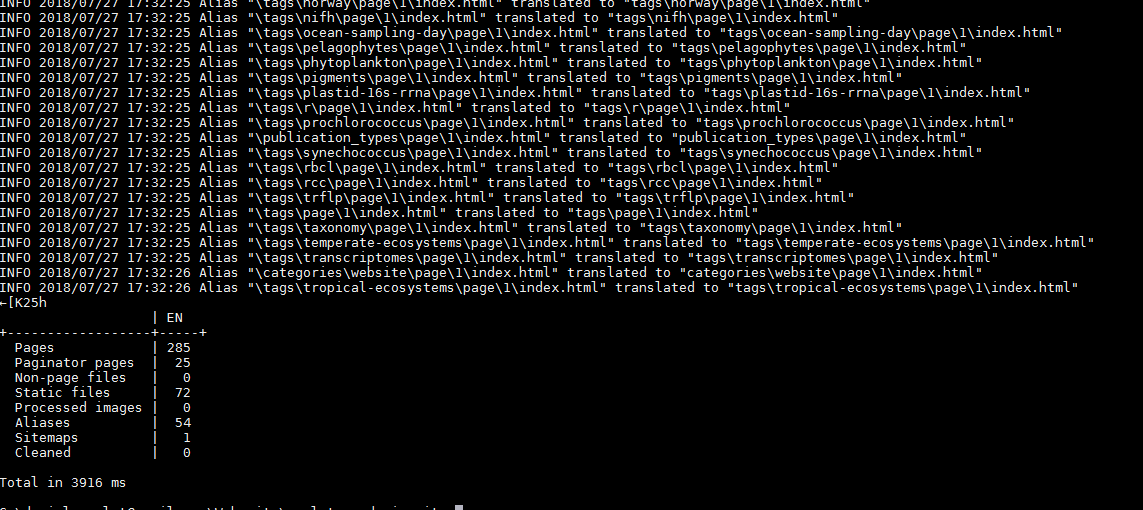 * If there is an error then hugo will point to the file that causes problem (and the line) with a description (sometimes cryptic) of the error
* If there is an error then hugo will point to the file that causes problem (and the line) with a description (sometimes cryptic) of the error
 * In this case, the error was caused by a missing comma between two tags (keywords)
* In this case, the error was caused by a missing comma between two tags (keywords)
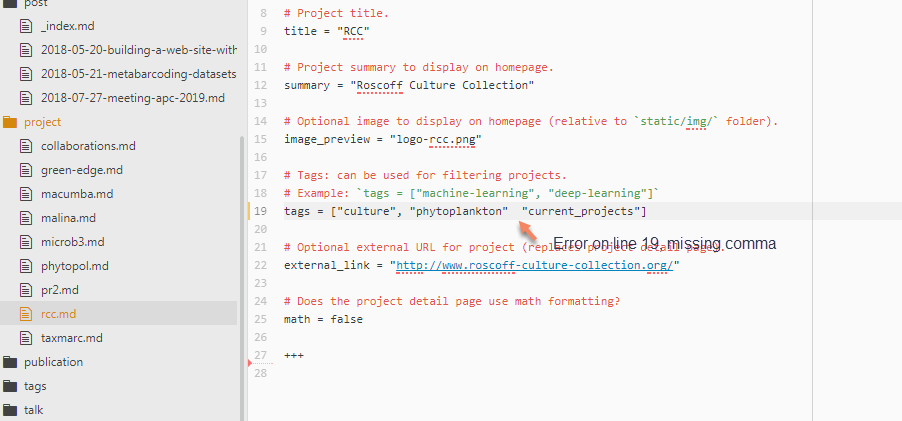
Images
Images for project vignettes are 150 px high
Customize the header image size to 800 px by using the a custom css copied to /static/css/ and modifying the config.toml. This template needs only to contain the code that has been changed in my case:
img, video { height: auto; max-width: 800px; margin-left: auto; margin-right: auto; display: block; }
Adding permanent links
- Add these lines to config.toml
[permalinks]
post = "/:year/:month/:day/:slug"
- Add at top of blog entry (change web-site to whatever)
slug: "web-site"
Internal links
With the new Academic template version, one can had internal links but it is a bit a pain to figure out.
Here are examples for the home directory (ref "home#team.md") and another directory (ref "eukref/about.md" ) which must be enclosed by double braces ({) and <
Bibliography imported from Mendeley
In Mendeley export using bibtex style (do not use the bibtex export because this will result in escaped caracters that do not work)
Use function from Lorenzo to import the bibtex file and trasnform to MD files.
Must correct quite a few things before however
change bibtex reference name that may contain space or other characters causing problems for import
change accentuated characters
remove {} that are around composite names
In the bibtex_2academic comment out lines that correspond to field that do not exist (e.g. for submitted)
Add tags and projects
Add abstracts and short abstracts (short abstracts are need for the home page)
Add images
There is also a special library recently developped for R
devtools::install_github("petzi53/bib2academic", build_vignettes = TRUE)- See https://github.com/gcushen/hugo-academic/issues/146
Rmd files
There is definite problem with Rmd files.
1. Include in the header the R code below
2. They need to be knitted to an html file
3. At each knitting iteration the yaml header is added again and again....
4. Still not working... so stick with md files...
output:
blogdown::html_page